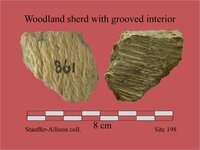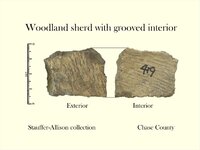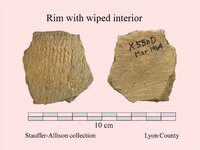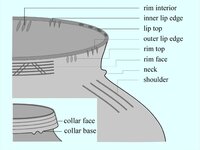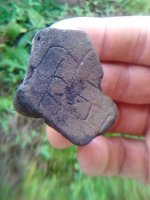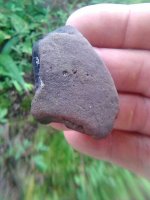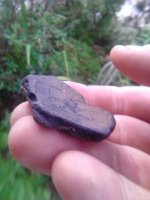Navigation
Install the app
How to install the app on iOS
Follow along with the video below to see how to install our site as a web app on your home screen.
Note: This feature may not be available in some browsers.
More options
You are using an out of date browser. It may not display this or other websites correctly.
You should upgrade or use an alternative browser.
You should upgrade or use an alternative browser.
has anyone seen pottery with disigns on the interior?
- Thread starter GatorBoy
- Start date
GatorBoy
Gold Member
- May 28, 2012
- 14,716
- 6,156
- Primary Interest:
- All Treasure Hunting
- Thread starter
- #81
I see you read that one... now try the other. And as far as evidence goes I have handily proven this little side item ..which is you still have alot to learn as do we all. And you may want to practice foot in mouth when speaking about things that you are no more qualified to speak about then other people in the room. having an opinion on something is one thing but rudely pushing your opinion as fact quite another. Have some respect.
Amazon Forum Fav 👍
Last edited:
GatorBoy
Gold Member
- May 28, 2012
- 14,716
- 6,156
- Primary Interest:
- All Treasure Hunting
- Thread starter
- #82
I agree with TN, these are construction marks - marks left by a wooden smoothing tool. In fact, 'Stefen' nailed it earlier in this thread: any interior marks are smoothing marks left by tooling the interior as the pot was built using coil after coil of clay.
The probability that Native Americans potters deliberately decorated the interior of a pot seems to me so negligible as to approach zero.
Think about it. You're building a pot, and you don't have a turntable. You lay down a bottom of the approximate dimensions you want. Then you lay down a coil of clay around the outer edge. You must tool the two pieces of clay to get them to mate (otherwise, they will separate when fired). You then lay down the second coil of clay onto the first, tooling the two coils to get them to mate. Then the third coil . . . and so on. Doesn't it make sense to you that, for the sake of efficiency, you would use the same smoothing tool on the interior and you do on the exterior?
think you may want to rethink how correct you are about everything in your own mind. and you say I imagine things....NICE
Harry Pristis
Bronze Member
think you may want to rethink how correct you are about everything in your own mind. and you say I imagine things....NICE
I stand by everything I've posted in this thread. My posts are anchored in reality. Bon voyage to you on your fantasy flights.
GatorBoy
Gold Member
- May 28, 2012
- 14,716
- 6,156
- Primary Interest:
- All Treasure Hunting
- Thread starter
- #84
You stated that pots were coil with no inclining of anything otherwise.then you make remarks about imagination and like your latest. You have every right to be a jerk. Just not on my thread. Please show anyone one thing I posted in this thread that is fantasy! In fact the only real incorrect statement came from you.
Last edited:
GatorBoy
Gold Member
- May 28, 2012
- 14,716
- 6,156
- Primary Interest:
- All Treasure Hunting
- Thread starter
- #86
Harry Pristis said:I stand by everything I've posted in this thread. My posts are anchored in reality. Bon voyage to you on your fantasy flights.
Lets get this straight for the record.. your posts are anchored in someone else's reality based on the information and technology they had available to them at the time. and in the case of this thread that reality is 50 years old. try to find the imagination in that.
water rocks
Newbie
- Nov 8, 2015
- 3
- 23
- Primary Interest:
- All Treasure Hunting
Charl
Silver Member
This pertains to Kansas, but may be relevant in discussing interior marks on such pottery....
ARTIFACTS OF KANSAS WEB PAGE
The first illustration here is covered by this paragraph:
"Pulling up the walls of a conical pot leaves walls that are irregular in thickness. Middle Woodland potters fixed this problem by rolling a cord-wrapped rod across the exterior of the vessel, either directly upward (c19) or at a diagonal (c20) , leaving telltale cord marking. The same was not possible on the vessel interior, where the curvature of the vessel prevented the stick from lying against the vessel wall. Therefore, the interiors had to be smoothed using a horizontal motion. If the cord-wrapped stick was used to do this, it left horizontal cord-marking that is occasionally mistaken for a fabric impression (c32), as in Greenwood phase pottery. Another technique involved some sort of toothed tool that left horizontal grooves (c32a). If a smooth interior was desired, the marks left by the smoothing out of the walls could be erased with a wet piece of suede."
This paragraph describes first the third image here, and then the second photo:
"The interiors of pots made by the paddle and anvil technique were sometimes smoothed, wiped or thinned. Sometimes wipe marks can be seen on the upper portions of the interiors, apparently left by a handful of grass (aop5). Scraping to thin the walls sometimes dragged temper particles, leaving distinctive tracks (aop6)."
And finally, this observation: "Vessel interiors were usually smoothed, probably so that food would not stick to them. Nevertheless, some sherds exhibit interior surfaces that do have some texturing, either grooving or so-called fabric impressions. Both kinds of interior texturing are limited to a minority of vessels of Early Ceramic age."
ARTIFACTS OF KANSAS WEB PAGE
The first illustration here is covered by this paragraph:
"Pulling up the walls of a conical pot leaves walls that are irregular in thickness. Middle Woodland potters fixed this problem by rolling a cord-wrapped rod across the exterior of the vessel, either directly upward (c19) or at a diagonal (c20) , leaving telltale cord marking. The same was not possible on the vessel interior, where the curvature of the vessel prevented the stick from lying against the vessel wall. Therefore, the interiors had to be smoothed using a horizontal motion. If the cord-wrapped stick was used to do this, it left horizontal cord-marking that is occasionally mistaken for a fabric impression (c32), as in Greenwood phase pottery. Another technique involved some sort of toothed tool that left horizontal grooves (c32a). If a smooth interior was desired, the marks left by the smoothing out of the walls could be erased with a wet piece of suede."
This paragraph describes first the third image here, and then the second photo:
"The interiors of pots made by the paddle and anvil technique were sometimes smoothed, wiped or thinned. Sometimes wipe marks can be seen on the upper portions of the interiors, apparently left by a handful of grass (aop5). Scraping to thin the walls sometimes dragged temper particles, leaving distinctive tracks (aop6)."
And finally, this observation: "Vessel interiors were usually smoothed, probably so that food would not stick to them. Nevertheless, some sherds exhibit interior surfaces that do have some texturing, either grooving or so-called fabric impressions. Both kinds of interior texturing are limited to a minority of vessels of Early Ceramic age."
Attachments
Last edited:
Charl
Silver Member
Although the above examples of interior marking resulted from the manufacturing process, it really is not accurate to claim the interiors of ceramic vessels were never deliberately decorated. It did happen.
"Decoration on prehistoric vessels from Kansas tends to occur in well-defined decorative zones, which vary from period to period and from one cultural tradition to another (aop13). Decoration on the rim interior shows up in the White Rock phase at the end of the Middle Ceramic period, and more rarely in Bluff Creek and complexes of the Late Ceramic period. Decoration on the inner lip edge is rare, but the lip top is the most commonly decorated zone after the Middle Woodland"
"Decoration on prehistoric vessels from Kansas tends to occur in well-defined decorative zones, which vary from period to period and from one cultural tradition to another (aop13). Decoration on the rim interior shows up in the White Rock phase at the end of the Middle Ceramic period, and more rarely in Bluff Creek and complexes of the Late Ceramic period. Decoration on the inner lip edge is rare, but the lip top is the most commonly decorated zone after the Middle Woodland"
Attachments
Top Member Reactions
-
 3390
3390 -
 2000
2000 -
 1936
1936 -
 1157
1157 -
 1097
1097 -
 891
891 -
 800
800 -
 797
797 -
 787
787 -
 787
787 -
 744
744 -
 535
535 -
 478
478 -
 464
464 -
 444
444 -
 422
422 -
 422
422 -
 420
420 -
E
411
-
 384
384
Users who are viewing this thread
Total: 3 (members: 0, guests: 3)
Latest Discussions
-
-
🔎 UNIDENTIFIED What kind of knife is this. Measures 25 inches
- Latest: Treasure_Hunter
-
-
-









